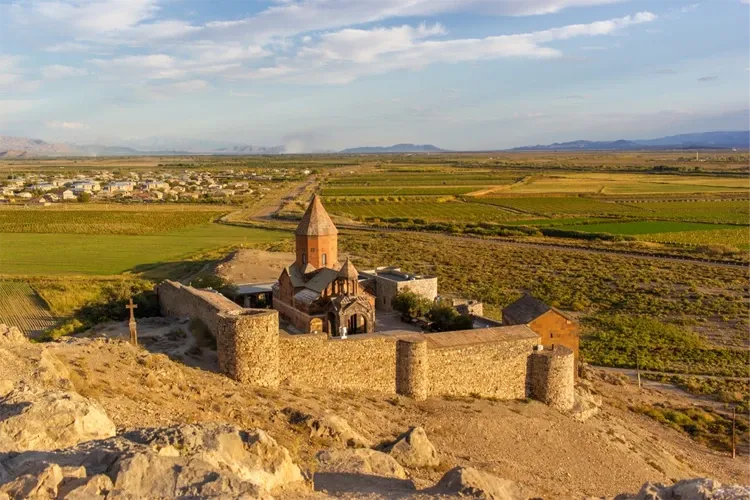Armenian and German researchers uncovered the remains of a fourth-century church in Armenia, representing a significant discovery about the history of early Christianity.
The team of researchers from the National Academy of Sciences in Armenia and the University of Munster in Germany found an octagonal structure with cruciform extensions, a design seen at sites in the eastern Mediterranean region but previously unknown in Armenia, which was the first nation to become formally Christian in the centuries after the ascension of Jesus Christ.
University of Munster professor Achim Lichtenburger said that the structure is “the oldest archaeologically documented church in the country” and marks “sensational evidence for early Christianity in Armenia,” which is a landlocked country in western Asia to the east of Turkey.
The researchers found remains of wooden platforms in the four extensions of the building which create the cruciform shape, allowing them to radiocarbon date the structure to the fourth century. They also learned that the building had a “simple mortar floor and terracotta tiles,” as well as marble imported from the Mediterranean, allowing the building to be “lavishly decorated.”
German and Armenian researchers said they will continue to excavate the site, which is located near the medieval monastery of Khor Virap, and expect to make additional discoveries.
Academics at the University of Munster noted that Armenia was the first nation to adopt Christianity as a state religion in the early fourth century. Gregory the Illuminator, a member of the court of King Tiridates III, was imprisoned for fourteen years in a pit near Khor Virap after refusing to make a sacrifice to a pagan goddess, but later converted the ruler to Christianity.
Roughly 92% of modern Armenians identify with the Armenian Apostolic Church, while other religious groups include Roman Catholics, Armenian Uniate Catholics, Orthodox Christians, and evangelical Christians, according to a report from the United States Department of State.
The discovery of the church in Armenia comes months after researchers from the University of Exeter uncovered an early Christian structure in the small Middle Eastern nation of Bahrain which may have been a palace for a bishop. The building was occupied until the eighth century and survived because Muslims later constructed a mosque on top of the original site.



